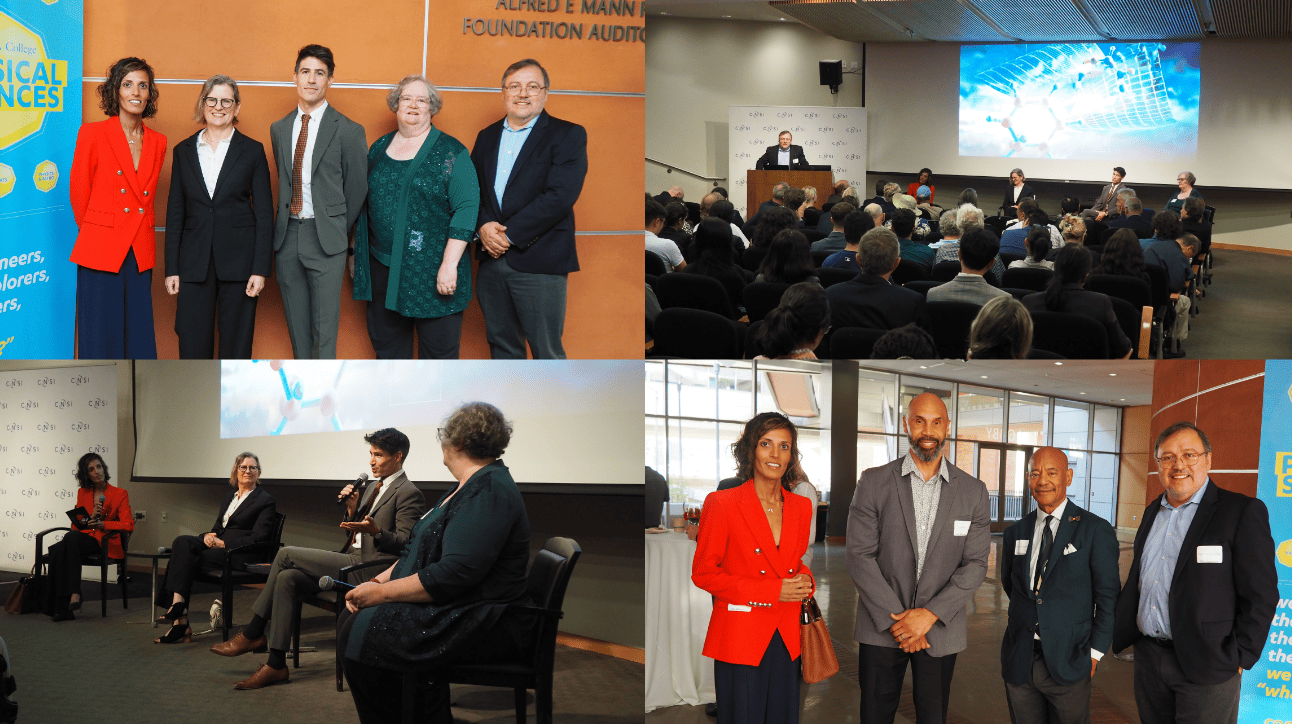QUAntum Sensing for Humanity (QUASH) Event Explores Use of Quantum Sensing to Guide Climate, Public Health Decisions

Insider Brief
- A UCLA panel led by Senior Dean Miguel García-Garibay explored quantum sensing technologies and their potential impact on climate change and public health decisions.
- Panelists discussed the integration of quantum sensors to track atmospheric chemistries, aerosols, and environmental variables, aiming to operate at the limits of physical laws.
- The group is developing a quantum sensor network, using machine learning and AI to process data, providing real-time, high-resolution information for better health and environmental decisions.
- Image: The QUASH event, led by UCLA faculty and CNSI members, explored the potential of quantum sensing to address climate change and public health challenges. (Penny Jennings)
UNIVERSITY NEWS — The limits of the laws of physics were explored at a special discussion on quantum sensing and the potential utility of these revolutionary concepts and devices.
Led by Miguel García-Garibay, Senior Dean, UCLA College and Dean, Division of Physical Sciences, the panel of UCLA faculty and California NanoSystems Institute members included: Prineha Narang, Professor in Physical Sciences, and Electrical and Computer Engineering; Sergio Carbajo, Assistant Professor Electrical and Computer Engineering, and Physics and Astronomy Department; Suzanne Paulson, Professor Department of Atmospheric and Oceanic Sciences and Andrea Bertozzi, Distinguished Professor, Mathematics and Aerospace Engineering
“Sensors, in interacting with the environment, provide us with a measurable response. Introducing quantum mechanical phenomena to sensor technology will affect our decisions about the water we drink and the air we breathe based on the best possible data synthesized by quantum sensors operating at the limit of the laws of physics,” said Narang.
Topics explored included:
- Why is UCLA ahead of the curve on quantum sensing?
- How do we find the right problem to solve as part of new quantum sensing methods?
- And ultimately, why quantum?
This team is addressing one of the greatest problems of our generation – how to track and to respond to a rapidly changing climate. Through the group’s discussion, a quantum sensor network to understand atmospheric chemistries, aerosols, and climate variables, may hold the key.
“The air is full of aerosol particles,” said Paulson, who also leads the Center for Clean Air at UCLA. “A small fraction of these aerosol particles are bioaerosols, but these play outsized roles in plant, ecosystem, human and climate health.”
The ability to get information “on chip” via sensors gives researchers the opportunity to measure individualized particles and provide, according to Carbajo, “lots of data and measurements.”
Carbajo added: “We are exploring a new way to integrate dual comb spectroscopy with super resolution techniques into a field-deployable platform so we can identify and measure particles beyond laboratory settings.”
The plethora of data being generated will require significant modern machine learning and AI to understand the data.
According to Bertozzi, “this presents an exciting challenge for someone like myself, who has a history of working with somewhat similar remote sensing data with different but related modalities.”
Narang says the group hopes to enable better public health decision-making, based on new measurements and real-time analyses of atmospheric chemistries with unprecedented resolution, providing actionable information on locality, e.g., to prevent respiratory illness, enabled in real-time by a comprehensive entangled network of quantum sensors.
“What is exciting about this work is that we are addressing measurement challenges and giving scientists across fields new methods and new insights into a variety of key questions. Entanglement is a powerful quantum resource and we can’t wait to bring this technology to everyone.”
